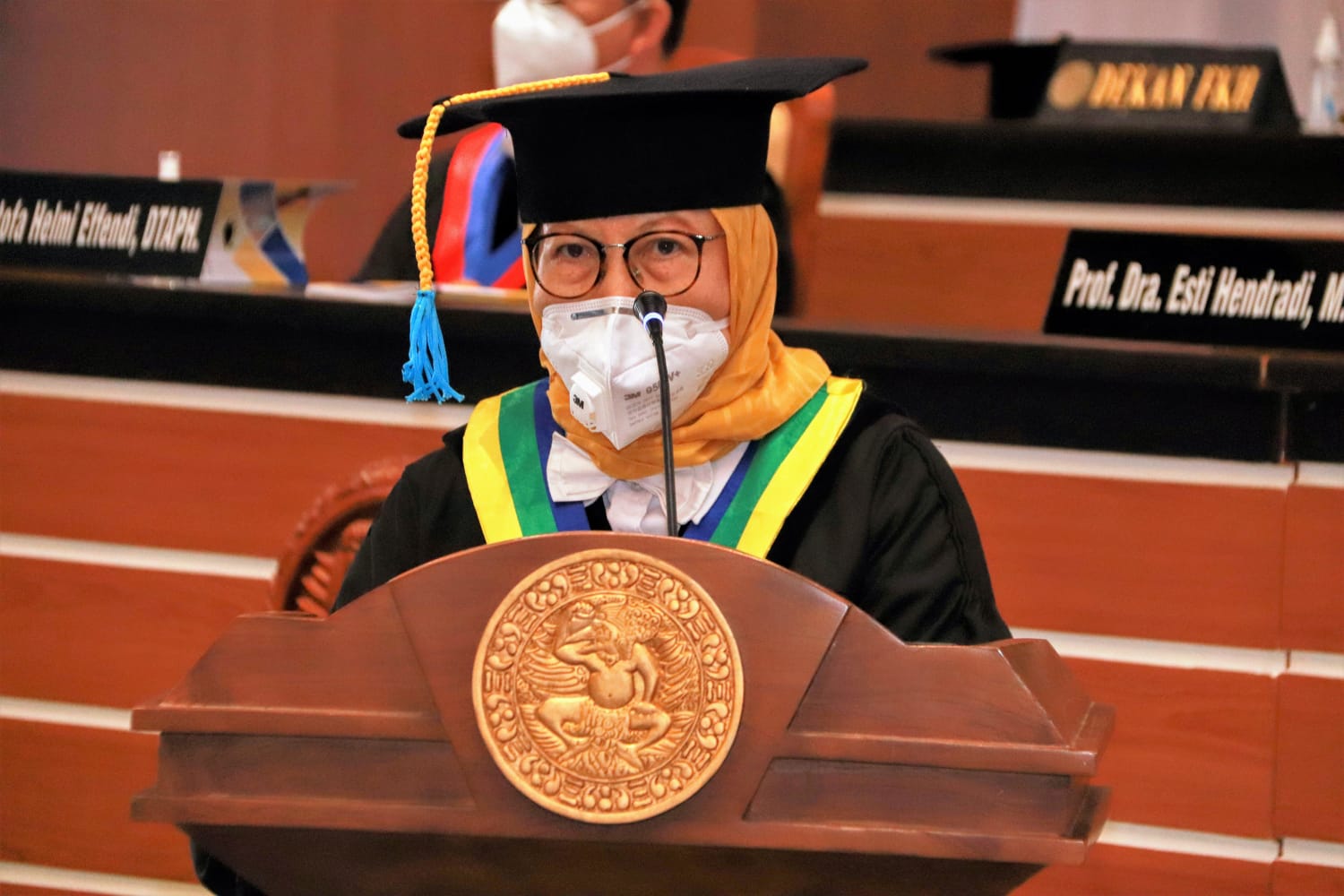UNAIR NEWS – The Rector of Universitas Airlangga inaugurated Prof. Dra. Esti Hendradi., Apt., MSi., Ph.D. as Professor of Pharmaceutics on Wednesday, October 6, 2021. The inauguration at the Garuda Mukti Hall with limited audiences conferred Prof. Esti as the 27th Professor of the Faculty of Pharmacy.
In the inauguration, Prof. Esti delivered a scientific oration entitled ‘Development of Nanotechnology in Transdermal Drug Delivery System.’ Currently, many drug compounds are insoluble, difficult to absorb, and easily decomposed. Moreover, they have per-consumption side effects, which limit their use.
According to Prof. Esti, good drug delivery should have maximum effectiveness and minimal side effects even though it is given in a small frequency. Prof. Esti said that the transdermal drug delivery system has the potential to be developed.
“The transdermal drug delivery system is a systemic drug delivery which applies drugs to the surface of the skin, where drug molecules will penetrate through the stratum corneum and then enter deeper layers,” she said.
The type of drug delivery system that uses nanotechnology is the transdermal delivery system. The nanotechnology used includes niosomes, microemulsions, micelles, and nanostructured lipid carriers (NLC).
Furthermore, Prof. Esti explained that niosomes are a new drug delivery system consisting of an aqueous core cavity for hydrophilic drugs and a bilayer membrane for hydrophobic drugs.
“The niosome system consists of Span 60-Cholesterol towards diclofenac sodium as the active ingredient in an HPC-based gel which gives an entrapment efficiency of 74.33 percent and increases the penetration rate and permeability of diclofenac sodium as an analgesic/anti-pain.”
The alumnus of Hoshi University said that microemulsions are isotropic mixtures of at least oil, water, surfactant, and cosurfactant phases. She added that the microemulsion shows whether the drug substance has a high affinity for the base.
This idea is based on a study of A/M type microemulsions using diclofenac sodium as the active ingredient, Span 80-Tween 80 as a surfactant, and isopropanol as a co-surfactant.
“Microemulsions gain the interests of pharmaceutical scientists because of their great potential to act as drug delivery systems by combining various BCS Class-II and Class-IV specific drug molecules,” she explained.
In addition to microemulsions, Prof. Esti mentioned that micelles are similar to microemulsions. Micelles consisting of amphiphilic colloidal structures can provide high solubility of bioactive compounds and show controlled release.
“Our research has also used diclofenac in the micellar system. It showed that diclofenac flux increased significantly with the provision of a mixed bile-lecithin micellar salt,” said the alumnus of the Faculty of Pharmacy UNAIR in 1984.
Furthermore, there is a Nanostructured Lipid Carrier (NLC) system, a new generation of Solid Lipid Nanoparticles (SLN) able to be used as a drug carrier for transdermal delivery. Prof. Esti said that NLC consists of a mixture of solid lipids and liquid lipids and forms a lipid core matrix stabilized by surfactants. From her research, stabilization by surfactants can last up to 90 days.
In research conducted by Prof. Esti, transdermal patch technology provides a wide range of clinically significant benefits. “We have also researched patch development by testing the effect of the polymer matrix combination,” she said.
“The matrix-type meloxicam patch test showed that the patch with the composition of HPMC E15 gave the best results, based on a series of evaluations of physicochemical characteristics carried out,” she continued.
The transdermal patch itself is part of the adhesive delivery system with medicinal compounds placed on the skin to release specific doses of active substances through the skin into the bloodstream. (*)
Author: Tata Ferliana W.
Editor: Binti Q. Masruroh





